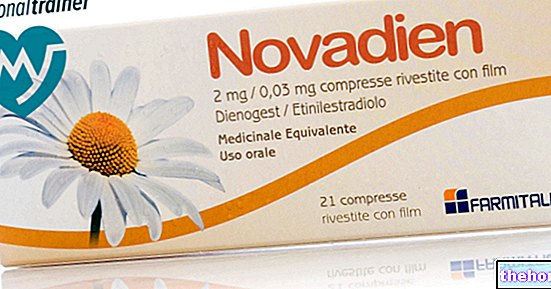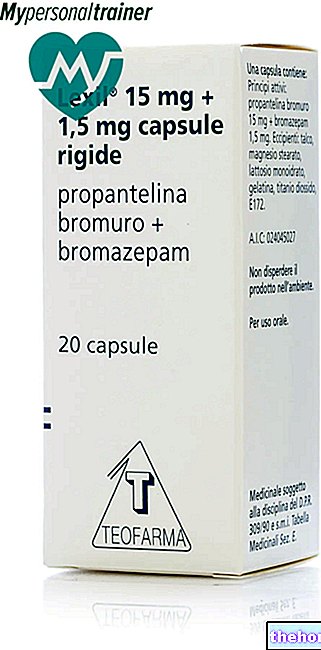Active ingredients: Betamethasone, Chloramphenicol
BETABIOPTAL 0.2% + 0.5% Ophthalmic ointment
BETABIOPTAL 0.2% + 0.5% Eye drops, Suspension
Betabioptal package inserts are available for pack sizes: - BETABIOPTAL 0.2% + 0.5% Ophthalmic ointment, BETABIOPTAL 0.2% + 0.5% Eye drops, Suspension
- BETABIOPTAL 0.13% + 0.25% Ophthalmic Gel
Why is Betabioptal used? What is it for?
PHARMACOTHERAPEUTIC CATEGORY
Preparation containing an anti-inflammatory steroid and an antibiotic, chloramphenicol.
INDICATIONS
Betabioptal is indicated in non-purulent ophthalmic infections from germs sensitive to chloramphenicol when it is useful to associate the anti-inflammatory action of betamethasone. In particular: inflammation of the anterior segment of the eye, especially postoperative; bacterial and allergic conjunctivitis; acute iridocyclitis
The pharmaceutical form ophthalmic ointment is particularly suitable for night application or when the eye is protected by a bandage.
Contraindications When Betabioptal should not be used
a) Intracular hypertension; b) Acute herpes simplex and most of the other corneal virus diseases in the acute ulcerative phase, except in association with specific chemotherapeutic agents for the herpetic virus, conjunctivitis with ulcerative keratitis even in the initial phase (positive fluorescein test). In viral herpetic keratitis it is not recommended to use it, which can only be allowed under the strict supervision of the ophthalmologist; c) Tuberculosis of the eye; d) Mycosis of the eye; e) Acute purulent ophthalmias, purulent conjunctivitis and purulent and herpetic blepharitis which can be masked or aggravated by corticosteroids; f) Sty.
Hypersensitivity to any component of the preparation.
Precautions for use What you need to know before taking Betabioptal
In very early childhood, the product should be administered only in case of real need and under the direct supervision of the doctor.
Interactions Which drugs or foods can modify the effect of Betabioptal
In pregnant or lactating women, the product should be administered in cases of real need, under the direct supervision of the doctor. The safety of intensive and prolonged topical steroid-based therapies in pregnancy has not been fully established.
Warnings It is important to know that:
During prolonged treatments it is advisable to carry out frequent checks of the ocular tone.
Prolonged use could cause glaucoma, with consequent damage to the optic nerve, visual field defects and reduced visual acuity, formation of posterior subcapsular cataracts, or contribute to the stabilization of secondary ocular infections by pathogens released from the ocular tissue.
The uninterrupted application of Betabioptal for more than one month, without specialist supervision, is not recommended.
In diseases that generate thinning of the cornea and sclera, monitoring must be more careful, bearing in mind the possible negative action of steroids (cases of corneal perforation have been described).
In coincidence with prolonged topical applications of steroids and antibiotics, the development of non-sensitive microorganisms, including fungi, is more likely; should this occur or no clinical improvement is noted in a reasonable period of time, discontinue use of the preparation and consult your doctor.
Rare cases of bone marrow hypoplasia have been described following prolonged use of topical chloramphenicol. For this reason, the product should be used for short periods, unless explicitly indicated by the doctor.
Dose, Method and Time of Administration How to use Betabioptal: Posology
Eye drops
1 or 2 drops in the conjunctival sac, 3 to 6 times per day, according to medical prescription.
Ointment
Apply in the conjunctival sac, 3 to 6 times per day, according to medical prescription.
Side Effects What are the side effects of Betabioptal
Prolonged use of chloramphenicol can give rise to sensitization reactions (heartburn, angioneurotic edema, urticaria, vesicular and maculopapular dermatitis); if such symptoms occur, discontinue treatment.
The pharmaceutical form of the eye drops contains merthiolate as a preservative and, therefore, it is possible that allergic reactions may occur.
The patient must inform his doctor or pharmacist of any undesirable effects that occur during therapy with the product.
Expiry and Retention
Eye drops: The product should not be used more than 15 days after first opening the container.
Ointment: The product should not be used beyond 28 days after first opening the container.
Keep out of reach of children.
Check the expiration date of the product shown on the package.
Do not use the medicine beyond the indicated expiration date.
The expiry date indicated refers to the product in intact packaging, correctly stored.
Eye drops, Suspension: store between 2 ° and 8 ° C
Ophthalmic ointment: do not store above 25 ° C
COMPOSITION
Eye drops
100 ml contain:
Active principles:
Betamethasone 0.2 g
Chloramphenicol 0.5 g
Excipients:
Polyethylene glycol 300 5.0 g
Polyethylene glycol 1500 0.5 g
Polyethylene glycol 4000 0.5 g
Boric acid 1.6 g
Sodium borate 0.1 g
Polyoxyethylene sorbitan monoleate 0.2 g
Hydroxypropylmethylcellulose 2910 0.3 g
Sodium ethyl mercury thiosalicylate 0.002 g
Purified water q.s.
Ointment
100 g contain:
Active principles:
Betamethasone 0.2 g
Chloramphenicol 0.5 g
Excipients:
Cetyl alcohol 3.0 g
Polyethylene glycol 300 5.0 g
Polyethylene glycol 1500 0.5 g
Polyethylene glycol 4000 0.5 g
Vaseline oil 16.0 g
Esters of p-hydroxybenzoic acid 0.004 g Vaseline to taste
PACKAGES
5 ml bottle with dropper.
5 g tube.
Source Package Leaflet: AIFA (Italian Medicines Agency). Content published in January 2016. The information present may not be up-to-date.
To have access to the most up-to-date version, it is advisable to access the AIFA (Italian Medicines Agency) website. Disclaimer and useful information.
01.0 NAME OF THE MEDICINAL PRODUCT
BETABIOPTAL
02.0 QUALITATIVE AND QUANTITATIVE COMPOSITION
Eye drops
100 ml contain:
Active principles:
Betamethasone 0.2 g
Chloramphenicol 0.5 g
Ointment
100 g contain:
Active principles:
Betamethasone 0.2 g
Chloramphenicol 0.5 g
03.0 PHARMACEUTICAL FORM
Topical ophthalmic suspension.
Topical ophthalmic ointment.
04.0 CLINICAL INFORMATION
04.1 Therapeutic indications
Betabioptal is indicated in non-purulent ophthalmic infections from germs sensitive to chloramphenicol when it is useful to associate the anti-inflammatory action of betamethasone. In particular: inflammation of the anterior segment of the eye, especially post-operative; bacterial and allergic conjunctivitis; acute iridocyclitis.
The pharmaceutical form ophthalmic ointment is particularly suitable for night application or when the eye is protected by a bandage.
04.2 Posology and method of administration
Eye drops: 1 or 2 drops in the conjunctival sac, 3 to 6 times a day, according to medical prescription.
Ointment: Apply in the conjunctival sac, 3 to 6 times a day, according to medical prescription.
04.3 Contraindications
a) Intracular hypertension; b) Acute herpes simplex and most of the other corneal virus diseases in the acute ulcerative phase, except in association with specific chemotherapeutic agents for the herpetic virus, conjunctivitis with ulcerative keratitis even in the initial phase (positive fluorescein test). In viral herpetic keratitis it is not recommended to use it, which can only be allowed under the strict supervision of the ophthalmologist; c) Tuberculosis of the eye; d) Mycosis of the eye; e) Acute purulent ophthalmias, purulent conjunctivitis and purulent and herpetic blepharitis which can be masked or aggravated by corticosteroids; f) Sty.
Hypersensitivity to any component of the preparation.
04.4 Special warnings and appropriate precautions for use
During prolonged treatments it is advisable to carry out frequent checks of the ocular tone. Prolonged use could cause glaucoma, with consequent damage to the optic nerve, visual field defects and reduced visual acuity, formation of posterior subcapsular cataracts, or contribute to the stabilization of secondary ocular infections by pathogens released from the ocular tissue. The uninterrupted application of Betabioptal for more than one month, without specialist supervision, is not recommended.
In diseases that cause thinning of the cornea and sclera, monitoring must be more careful, bearing in mind the possible negative action of steroids (cases of corneal perforation have been described).
Coinciding with prolonged topical applications of steroids and antibiotics, the development of non-sensitive microorganisms, including fungi, is more likely; should this occur or no clinical improvement is noted in a reasonable period of time, discontinue use of the preparation and consult your doctor.
Rare cases of bone marrow hypoplasia have been described following prolonged use of topical chloramphenicol. For this reason, the product should be used for short periods, unless explicitly indicated by the doctor.
Keep out of reach of children.
EYE DROPS: The product should not be used more than 15 days after first opening the container.
OIL: The product should not be used more than 28 days after first opening the container.
In very early childhood, the product should be administered in cases of real need under the direct supervision of the doctor.
04.5 Interactions with other medicinal products and other forms of interaction
They are not known.
04.6 Pregnancy and lactation
In pregnant or lactating women, the product should be administered in cases of real need under the direct supervision of the doctor.
The safety of intensive and prolonged topical steroid-based therapies in pregnancy has not been fully established.
04.7 Effects on ability to drive and use machines
Nobody.
04.8 Undesirable effects
Prolonged use of chloramphenicol can give rise to sensitization reactions (heartburn, angioneurotic edema, urticaria, vesicular and maculopapular dermatitis); if such symptoms occur, discontinue treatment. The pharmaceutical form of the eye drops contains merthiolate (an organomercurial compound) as preservative and, therefore, sensitization reactions may occur (see section 5.2).
04.9 Overdose
No cases of overdose have been reported.
05.0 PHARMACOLOGICAL PROPERTIES
05.1 Pharmacodynamic properties
The pharmacological characteristics of the product can be deduced from the properties of the individual active ingredients.
Betamethasone: corticosteroid with anti-inflammatory activity 8 times higher than that of prednisolone.
It determines a rapid remission of the inflammatory component, whether it is determining the pathology or concomitant with infected forms.The existing ability to interfere with ocular tone generally does not manifest itself when administered by topical ocular route for short periods (less than a month), as required in the pathology in which Betabioptal is used.
Chloramphenicol: antibiotic with a broad spectrum of action. It acts on gram-positive and gram-negative germs, with bacteriostatic activity. It has a reduced bacterial resistance. It has a low toxicity when administered topically and is well tolerated by the tissues of the eye. eye.
The acute toxicity tests carried out on both mice and rats using the old formulation (more complex because it also included nitrofurazone and tetrizoline hydrochloride) gave LD50 values per os greater than 40 ml / kg.
The tests of tolerability and general toxicity carried out on albino rabbits did not show significant differences between the controls carried out on animals treated with Betabioptal eye drops or ointment and those treated with placebo.
05.2 Pharmacokinetic properties
05.3 Preclinical safety data
06.0 PHARMACEUTICAL INFORMATION
06.1 Excipients
Eye drops
Polyethylene glycol 300: 5.0 g
Polyethylene glycol 1540: 0.5 g
Polyethylene glycol 4000: 0.5 g
Boric acid: 1.6 g
Sodium borate: 0.1 g
Polyoxyethylene sorbitan monoleate: 0.2 g
Hydroxypropylmethylcellulose 2910: 0.3 g
Sodium ethyl mercury thiosalicylate: 0.002 g
Purified water q.s.
Ointment
Cetyl alcohol: 3.0 g
Polyethylene glycol 300: 5.0 g
Polyethylene glycol 1540: 0.5 g
Polyethylene glycol 4000: 0.5 g
Vaseline oil: 16.0 g
Esters of p-hydroxybenzoic acid: 0.004 g
Vaseline to taste
06.2 Incompatibility
They are not known.
06.3 Period of validity
Eye drops: 18 months.
Ointment: 24 months
06.4 Special precautions for storage
The eye drops should be stored between 2 ° and 8 ° C.
The ointment should not be stored above 25 ° C.
06.5 Nature of the immediate packaging and contents of the package
Eye drops:
5 ml plastic bottle complete with dropper and cap with screw closure. The bottle and the dropper are in low density polyethylene, the cap in polypropylene.
Ointment:
5 g aluminum tube internally coated with epoxy and melamine resins complete with nozzle and screw cap. The spout and cap are made from a mixture of high density polyethylene (20%) and low density polyethylene (80%).
06.6 Instructions for use and handling
07.0 MARKETING AUTHORIZATION HOLDER
THEA FARMA S.p.A.
Via Giotto, 36 "." 20145 Milan
08.0 MARKETING AUTHORIZATION NUMBER
Eye drops:
A.I.C. n ° 020305049
Ointment:
A.I.C. n ° 020305037
09.0 DATE OF FIRST AUTHORIZATION OR RENEWAL OF THE AUTHORIZATION
June 1966
10.0 DATE OF REVISION OF THE TEXT
May 2012




























